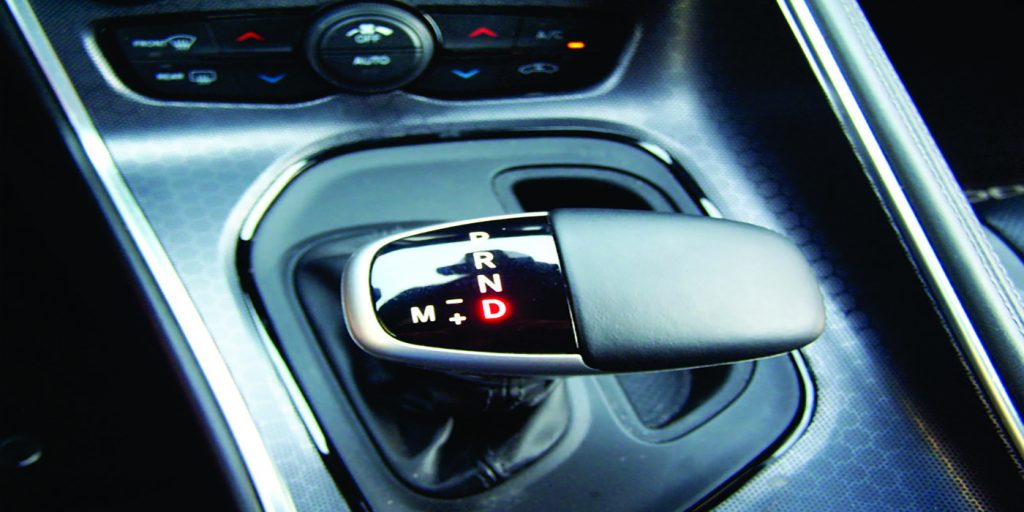Line pressure in an automatic transmission refers to the pressure of the hydraulic fluid that flows through the transmission. This pressure helps shift gears and control the transmission’s operation.
Automatic transmissions use an oil pump to maintain the required amount of line pressure. The fluid is pressurized and sent to the control valve, where it directs the flow to the different components to shift gears. If the line pressure is too low, it could cause slipping between gears resulting in gear hesitation, erratic shifting, and other transmission problems.
On the other hand, if the line pressure is too high, it could lead to harsh shifting or transmission damage. Maintaining proper line pressure is crucial to ensure that the automatic transmission is functioning properly and performing optimally.

Credit: www.transmissiondigest.com
An Introduction To Automatic Transmission
Automatic transmissions work by using fluid pressure, which is generated by the engine. The pressure is then sent to the transmission, where it helps to control the gears and other components. The components involved in this process include the torque converter, the gear set, the planetary gearset, and the control valve.
These components work together to ensure that the transmission shifts gears smoothly and accurately. The operational mechanism of an automatic transmission involves a complex system of gears and hydraulics that are designed to work in harmony. The key is to create the right amount of pressure at the right time, which requires careful engineering and design.
This is why automatic transmissions are so important in modern cars – they provide a seamless driving experience that is both efficient and reliable.
What Is Line Pressure In Automatic Transmission?
Line pressure is an essential factor in automatic transmission that determines the shifting quality and longevity of transmission components. It is the hydraulic pressure exerted on the transmission fluid, which allows the torque converter, valve body, and clutches to operate efficiently.
Line pressure affects the upshift and downshift speed, the smoothness of gear changes, and the engagement of the torque converter. The components that determine line pressure are the transmission pump, pressure control solenoid, and regulating valve. These components work together to ensure a proper pressure range is maintained throughout the transmission system.
Understanding line pressure is crucial to diagnosing and repairing transmission problems. By monitoring and adjusting the line pressure, mechanics can assure proper transmission function and prolong the life of the transmission components.
Automatic Transmission, How it works?
The Significance Of Line Pressure In Automatic Transmission
Line pressure in automatic transmission is an essential factor to consider while driving. Low line pressure can lead to many issues such as slip, delayed shifting, overheating, and burning of the clutches and bands. It can also cause wear and tear of the transmission, eventually leading to its failure.
On the other hand, high line pressure can also damage the transmission by causing harsh shifting, excessive clutch and band wear, and failure of the pumps and gaskets. Therefore, maintaining optimal line pressure is crucial for the proper functioning of the transmission, which increases its lifespan and prevents expensive repairs.
It’s important to maintain the right line pressure and regularly inspect the vehicle to detect any possible issues before they worsen.
Diagnosing And Resolving Line Pressure Issues In Automatic Transmission
Automatic transmissions rely on a hydraulic system to operate smoothly. One crucial aspect of this system is the line pressure. Knowing the symptoms of line pressure problems such as delayed or hard shifts, slipping, or loss of power is vital to diagnosing the issue.
Causes of these problems can vary from a simple clog in the transmission filter to worn-out valves or clutch packs. Fixing low or high line pressure issues, depending on the problem, may include replacing the filter, adjusting the cable, or repairing or replacing worn-out parts.
To avoid line pressure issues, preventative measures such as regular fluid changes and avoiding sudden shifts or towing beyond the recommended capacity can prolong the life of an automatic transmission. Diagnosing and resolving line pressure problems in automatic transmissions can prevent more serious and costly transmission issues down the line.
Conclusion
As we come to the end of this blog post, it is clear that line pressure is a crucial element in ensuring the smooth operation of an automatic transmission. Too much or too little pressure can lead to serious issues, causing damage to the transmission and potentially costly repairs.
Understanding the role of line pressure in automatic transmissions is essential for anyone who relies on a vehicle equipped with this type of transmission. While it may seem like a complicated subject, there are many resources available to help you understand how line pressure works and how to maintain it for optimal transmission performance.
With a little bit of knowledge and care, you can keep your transmission operating smoothly and avoid serious problems down the road. So keep this information in mind and take good care of your transmission to ensure the longevity of your vehicle.
